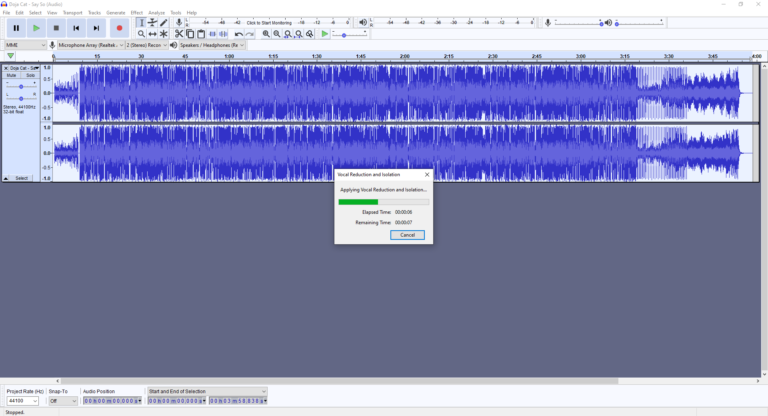

Click on Effect > Noise Profile, and a pop-up window will appear, where you can check what frequencies need to be removed.

Another way to clear unnecessary noise is by using the Noise Profile option. If this strategy doesn’t work, you can try to lower or raise some of the settings like room size, dampening, or reverberance. It’s advised to start by adjusting all the reverb settings to the middle of the bar. Since the composition of every song is different, the ideal reverb settings for removing vocals will be different. You can check the reverb settings on your audio clip by going to Effects > Reverb. If you have set stereo reverb settings on the audio you’re trying to edit, then the vocal remover on Audacity will fail to distinguish between the vocals, backing track, and background music. The first thing to pay attention to is the vocal reverb settings. How To Fix Audacity Vocal Remover Not Working This can happen for a variety of reasons, which we’ve discussed below (along with their fixes). That being said, there are some instances where Audacity fails to run the vocal remover and you’re stuck with an audio clip that won’t let you edit the singing or speaking sounds out. This is beneficial when you want to extract the backing track only or want to get rid of poor-quality audio. One such important feature is the vocal remover, which lets users cut out any vocals from a recording clip or song.

It packs many interactive features that can be used together to easily remove background noise, layer sounds, omit musical instruments, etc. and the lead vocal would surely be on a track by itself.Audacity is an audio recording and editing software that lets you edit audio clips for free.

STEMS is a multitrack format for DJ's that allows easy manipulation of specific elements. I would also suggest looking for a STEMS format version of your song. but these are not generally available for free in a program like Audacity (great as it is. I know that there are some fantastic plugins out there these days for isolating parts in already-mixed tracks using more advanced techniques. Background vocals which are mixed in stereo may remain. Particularly, you may get reverb or delay of the vocal remaining although the basic vocal itself is gone. So basically, songs that are mixed any other way will not cancel as well. (Bass is often dead center as well but occupies a lower frequency range so the cancelling algorithm or circuit can keep it from being cancelled). The most common vocal removal techniques work by taking advantage of the fact that the vocal is usually dead center in the mix (it is equal on both left and right channels) whereas most other instruments are mixed off to one side or the other.


 0 kommentar(er)
0 kommentar(er)
